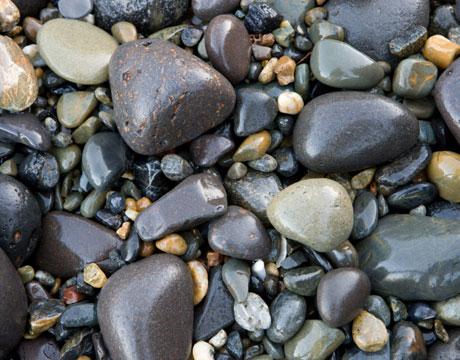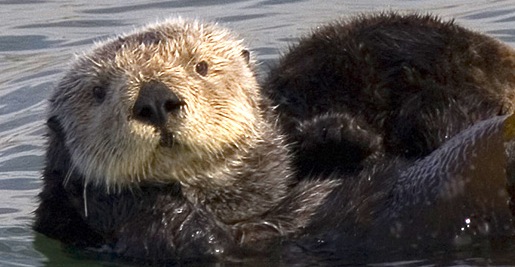We Will, We Will
Rock You!

If you need to complete or resubmit the Essay section of the Geology test, please download it here->
You must submit it by 8:00 AM Friday
The Relative Dating Presentation from Class on Monday:

|
TCIS Geology Test Essay.pdf Size : 85.061 Kb Type : pdf |

|
Relative Dating.pdf Size : 2632.895 Kb Type : pdf |

|
Plates and Volcanoes.pdf Size : 10707.661 Kb Type : pdf |
Rock Cycle Video Assignment
Due: Wednesday, May 18
Directions: Watch each of the video Clips and answer the corresponding questions
Clip A: Rocks and Minerals (http://youtu.be/7M-wuc_8of0)
1. What are rocks made from?
2. How many minerals are there?
3. How many are commonly found in rocks?
Clip B: Igneous Rocks (http://youtu.be/d4XAOY-VEEI)
4. Which type of rock are volcanic rocks?
5. What is the Earth's "skin" called?
6. What determines how large or small the crystals of an igneous rock are?
Clip C: Weathering (http://youtu.be/sDUpwM8brgU)
7. What happens when rainwater gets into the cracks in rocks and freezes?
Clip D: Erosion (http://youtu.be/9Df4CtlZ0AQ)
8. What does running water and wave action do to broken bits of rock?
Clip E: Sedimentary Rock (http://youtu.be/9Df4CtlZ0AQ)
9. What two processes form sedimentary rock? (Hint: Both words start with "c")
10. What is limestone formed from?
Clip F: Metamorphic Rock (http://youtu.be/ggIpPHIeJu4)
11. What two processes make metamorphic rocks?
Clip G: The Rock Cycle (http://youtu.be/VbtVtTSVZSc)
12. Draw a diagram of the rock cycle!
Heat and Cold
Homework Assignment 1: Watch clips 4 & 6 and take notes as you did in class. Be ready for a quiz on Wednesday.
Absolute Zero on BBC Four (Program 1)
Clip 1: http://www.youtube.com/watch?v=EamNpx5SCpY
Clip 2: http://www.youtube.com/watch?v=tEoI4197Nyo
Clip 3: http://www.youtube.com/watch?v=kmQixMFEFMg
Clip 4: http://www.youtube.com/watch?v=iVOg83XPb8Y
Clip 5: http://www.youtube.com/watch?v=EzMHCOkMGtY
Clip 6: http://www.youtube.com/watch?v=f9N1d9FtDu0
Heat Transfer
Water purification : Getting the Solutes out of the Solvent
Animal Adaptations
"I praise you, for I am fearfully and wonderfully made. Wonderful are your works; that I know very well" (Psalm 139:14)
Web Video Clip: www.pbs.org/wnet/nature/episodes/the-beauty-of-ugly/video-warthog-head-gear/449/
1. Why do you think the wart hog has a very hard head?
2. Why do you think the wart hog has a muzzle shaped like a shovel?
3. Why do you think the wart hog has tusks?
4. Why do you think the wart hog has warts?
Assignment: More Amazing Animal Adaptations
Web Video Clips: www.pbs.org/wnet/nature/lessons/it%E2%80%99s-a-jungle-out-there-how-species-survive-in-the-jungle/video-segments/5668/
1. Choose one of the following jungle animals
o Amazonian boa
o Basilisk lizard
o Bat
o Cuban crocodile
o Leafcutter ant
o Blue morpho butterfly
o Osprey
o Panther chameleon
o Paradise tree snake
o Red-eyed tree frog
o Spider monkey
o Tiger
o Trap-jaw ant
2. Watch the corresponding web video clip on your chosen animal.
3. What interesting adaptations does your animal have?
4. How do these adaptations help it to survive in its environment?
God blessed them and
said to them, "Be fruitful and increase in number; fill the earth and
subdue it. Rule over the fish of the sea and the birds of the air and
over every living creature that moves on the ground." Then God said, "I give you every seed-bearing plant on the face of the
whole earth and every tree that has fruit with seed in it. They will be
yours for food. And to all
the beasts of the earth and all the birds of the air and all the
creatures that move on the ground—everything that has the breath of life
in it—I give every green plant for food." And it was so. God saw all that he had made, and it was very good.
- Genesis 1: 28-31a
Endangered Species
In Class Activity: What's Killing the Sea Otters?
Sea otters have fought back for 75 years from near-extinction, but their population has mysteriously stalled. What is the culprit?
Web Video Clip: http://www.kqed.org/quest/television/whats-killing-the-sea-otters
Homework Part 1: The Loneliest Animals
(Assigned 9/15, Due 9/29)
Around the globe, unique and fascinating species face extinction from
hunting and habitat destruction, which affects vulnerable animals in
every kind of environment. Biologists, conservationists, wildlife
preservation centers and zoological parks work to breed and shelter rare
and critically endangered animals when and where they can, but many
species are down to the last few individuals and face an increasingly
uncertain future.
Web Video Clips: http://www.pbs.org/wnet/nature/lessons/the-loneliest-animals/video-segments/4949/
Select one of the following species and watch the clip online to fill out your grid on the worksheet. Your other group members will do the same.
•Yangtze Giant Soft-shell (Rafetus) Turtle (clip)
(You might also want to watch what happens to the plan to mate these last two turtles here: http://www.pbs.org/wnet/nature/episodes/the-loneliest-animals/video-the-last-living-pair-of-rafetus-turtles/4901/)
•Sumatran Rhino (clip)
•Golden-crowned Sifaka (Lemur)(clip)
•Black-footed Ferret(clip)
Accompanying Assignment (Assigned 9/15, Due 9/29)
(Download if you have misplaced your original):

|
loneliest animals.pdf Size : 0.13 Kb Type : pdf |

Homework Part 2: The Loneliest Animals
(Assigned 9/28 Due 10/4)
Choose an endangered species from one of the following web resources to complete page two of the homework assignment:
• World Wildlife Foundation: www.worldwildlife.org/species/
• Earth’s Endangered Creatures: http://www.earthsendangered.com/list.asp
Power Point #1 (For REVIEW)
Power Point #2 (For REVIEW)
Green Turtle Recovery Program
Hunting and egg harvesting nearly brought green sea turtles to the brink of extinction, but a conservation program is helping.
Web Video Clip: http://www.pbs.org/wnet/nature/episodes/kilauea-mountain-of-fire/video-green-turtle-recovery-program/4722/
Crash: A Tale of Two Species
This is the story of the fabric of life, and how every species is interconnected – each one important, no matter how big or small. At its center is the humble horseshoe crab, a creature which has remained virtually unchanged for 350 million years. Its annual spring spawning produces millions of eggs that are the lifeline for a tiny bird called the red knot, which migrates 10,000 miles from South America to the Arctic each year.
Web Video: http://www.pbs.org/wnet/nature/episodes/crash-a-tale-of-two-species/video-full-episode/4772/
Accompanying Assignment

|
CrashVideoWksht.pdf Size : 0.139 Kb Type : pdf |
Powerpoint Presentation for Ch.2
Biomagnification: The Faroe Islands
For more than 1,000 years, the people of the Faroe Islands have hunted pilot whales, and whale meat continues to be an important part of their diet. Now a study has found high levels of mercury and other contaminants in the whale meat.
Web Video: http://www.pbs.org/frontlineworld/stories/faroe605/video_index.html
Exotic Species and the Great Lakes
From National Geographic, a look at how the Sea Lamprey, Spiney Water Flea, and the Zebra Mussel have impacted the Great Lakes Ecosystem. Clip #3 examines the effect of biomagnification on Great Lakes Cormorants.
The Carbon Cycle
Assignment: Watch each of the four video clips and summarize each in one paragraph. Due Monday!
Ocean Tipping Point: Scientists from the Woods Hole Oceanographic Institution take a first hand look at how an increase in the atmosphere's CO2 may affect the sea, and what we can do about it.
Zone Creep: WIRED Science visits scientists and gardeners across the US to talk about how climate change might affect our planet's flora in the coming years.
Web Video Clip: http://www.pbs.org/kcet/wiredscience/video/119-zone_creep.html
Canary in a Coal Mine: Climate models predict major changes for Alaska's wildlife. Scientists are already seeing these effects on the guillemot population.
(You may need to download RealPlayer, a free application)